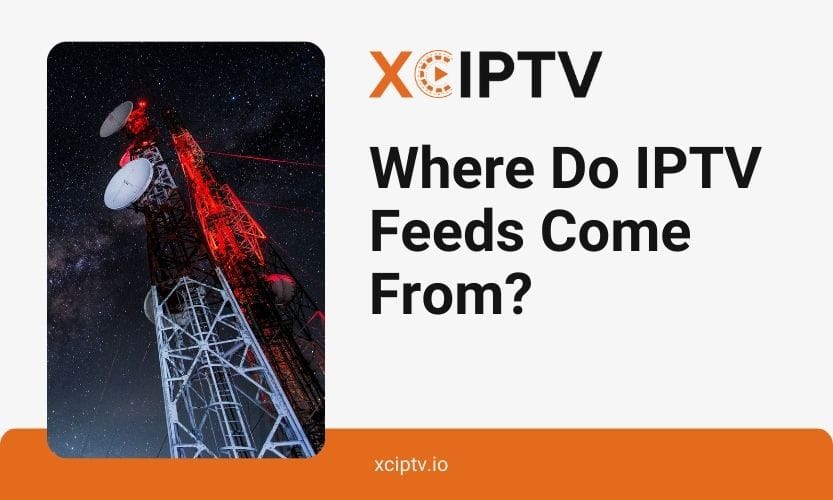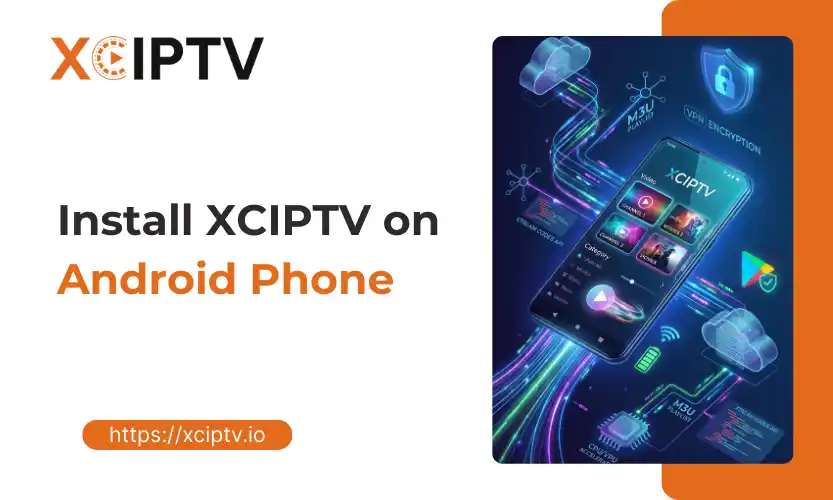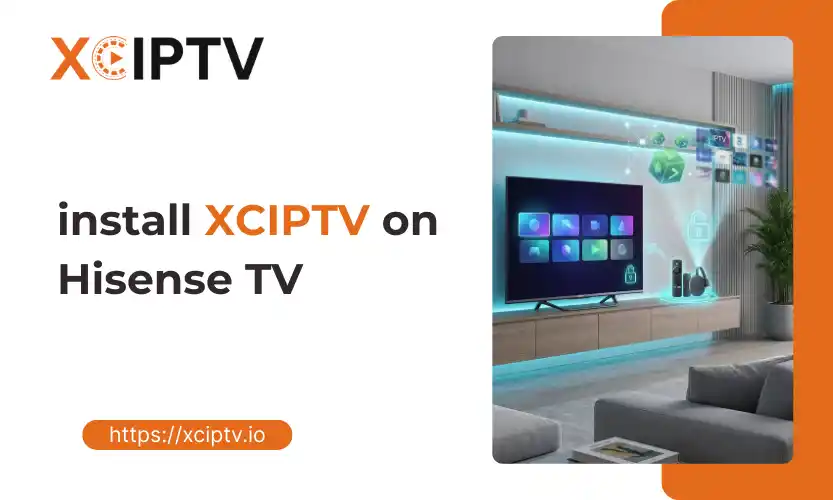Have you ever wondered how your favorite shows and movies make their way to your screen through IPTV? Internet Protocol Television (IPTV) is fascinating, with content flowing from various sources before reaching your device. Let’s dive into the origins of IPTV feeds and uncover the magic behind this modern entertainment technology.
IPTV uses a packet-switched network to deliver content, meaning data is broken down into smaller packets and reassembled at the destination. This method allows for more efficient data transmission and enables features like video-on-demand and interactive television.
How IPTV Differs from Traditional Broadcasting
While cable and satellite TV send all channels simultaneously, IPTV only transmits the content you request. This on-demand approach gives you more control over your viewing experience. Plus, IPTV works over the internet, so you’re not tied to a specific location or device.
IPTV also offers enhanced interactivity. You can pause, rewind, or fast-forward live TV, access additional information about shows, and even participate in polls or quizzes related to the content you’re watching. This level of engagement is rarely possible with traditional broadcasting methods.
Types of IPTV Feeds
IPTV offers several types of feeds to cater to different viewing preferences:
- Live TV Feeds: Watch your favorite shows and sports events in real-time, just like traditional TV. These feeds are particularly popular for news, sports, and live events.
- On-Demand Feeds: Choose from a library of content to watch whenever you like. This includes movies, TV series, and documentaries you can start, pause, and resume at your convenience.
- Catch-Up TV: Did you miss last night’s episode? No problem! Watch recently aired content at your convenience. This feature typically allows you to access content from the past 7-30 days, depending on the service provider.
- Video on Demand (VOD): Access a vast collection of movies and shows, ready to stream anytime. VOD services often include free and premium content, giving you flexibility in viewing choices.
Sources of IPTV Feeds
Where do IPTV feeds come from? They originate from various sources, creating a diverse content ecosystem:
Television Networks
Major broadcasters like NBC, CBS, and ABC provide much of the content for IPTV services. These networks often partner with IPTV providers to distribute their programming over IP networks. They may offer live streams of their channels and on-demand content from their libraries.
Streaming Services
Popular platforms like Netflix, Hulu, and Amazon Prime Video offer their content through IPTV services, expanding viewing options for subscribers. These services often produce their original content, adding to the variety of programming available through IPTV.
Content Aggregators
These companies collect content from multiple sources and package it for IPTV distribution. They play a crucial role in bringing together diverse programming options. Content aggregators may specialize in specific genres or offer a wide range of content to cater to different audience preferences.
User-Generated Content
Platforms like YouTube and Twitch allow users to create and share their own content, adding a unique flavor to the IPTV landscape. This democratization of content creation has led to new formats and niche programming that traditional broadcasters might not offer.
Satellite and Cable Providers
Traditional TV providers are adapting to the digital age by offering their content through IPTV services, often integrating both delivery methods. This hybrid approach allows them to reach a wider audience and provide more flexible viewing options to their customers.
Components of IPTV Feeds
Several key components work together to bring IPTV feeds to your screen:
- Content Delivery Networks (CDNs): These distributed server networks ensure smooth content delivery by reducing latency. CDNs store copies of content in multiple locations, allowing users to access it from the nearest server for faster streaming.
- Middleware: This software bridges the user interface and backend systems, managing content delivery and user interactions. It handles tasks like user authentication, content recommendation, and billing.
- Set-Top Boxes (STBs): These devices decode IPTV signals for display on your TV. Modern STBs often include features like DVR functionality and app support for additional streaming services.
- Streaming Protocols: Technologies like HLS (HTTP Live Streaming) and RTMP (Real-Time Messaging Protocol) facilitate the transmission of video content over IP networks. These protocols ensure efficient and reliable content delivery across various devices and network conditions.
- Digital Rights Management (DRM) protects copyrighted content from unauthorized use. DRM systems encrypt content and manage access rights, ensuring only authorized users can view the protected material.
Technologies Involved in IPTV Feeds
IPTV relies on several cutting-edge technologies:
- Internet Protocol: The backbone of IPTV, enabling content transmission over IP networks. IPv6, the latest version of the Internet Protocol, offers improved performance and security for IPTV services.
- Video Compression: Techniques like H.264 and HEVC reduce file sizes without sacrificing quality. These compression standards allow high-quality video transmission over limited bandwidth connections.
- Adaptive Bitrate Streaming: This technology adjusts video quality based on internet speed, ensuring smooth playback. It dynamically switches between different quality levels to maintain the best viewing experience.
- Cloud Computing: Cloud infrastructure supports the scalability and flexibility of IPTV services. Cloud-based solutions allow providers to quickly adjust to changing demand and roll out new features without significant hardware investments.
- 5G Technology: The latest cellular network promises to enhance IPTV streaming with faster speeds and lower latency. 5G could enable new possibilities for mobile IPTV consumption and improve the quality of live streaming services.
Legal Aspects of IPTV Feeds
The IPTV landscape involves complex legal considerations:
- Licensing Agreements: IPTV providers must secure the rights to distribute content legally. These agreements often involve complex negotiations with content owners and may vary by region.
- Copyright Compliance: Providers and users alike must respect intellectual property rights. This includes preventing unauthorized redistribution of copyrighted material.
- Regulation and Compliance: IPTV services must comply with broadcasting regulations in different regions. These can include content classification, advertising standards, and data protection laws.
- Anti-Piracy Measures: The industry employs various strategies to combat unauthorized content distribution. These may include watermarking, forensic marking, and collaboration with law enforcement agencies.
Challenges in IPTV Feed Distribution
Despite its advantages, IPTV faces several hurdles:
- Bandwidth Limitations: High-quality streaming requires robust internet infrastructure. This can be particularly challenging in areas with limited broadband access.
- Network Congestion: Peak viewing times can strain networks, affecting service quality. IPTV providers must implement effective traffic management strategies to maintain consistent performance.
- Content Licensing Issues: Negotiating rights across different regions can be complex. Geographic restrictions and exclusivity deals can limit the availability of certain content.
- Technological Challenges: Maintaining evolving standards and technologies is an ongoing task. This includes adapting to new video codecs, streaming protocols, and device capabilities.
- Market Competition: The crowded IPTV market makes standing out for providers challenging. Differentiation through unique content offerings, superior user experience, or innovative features is crucial for success.
FAQs
What’s the main difference between IPTV and traditional TV?
IPTV delivers content on-demand over the Internet, while traditional TV broadcasts all channels simultaneously. IPTV offers more flexibility and interactivity.
Are IPTV feeds legal?
Legal IPTV services obtain proper licensing for their content. However, some unauthorized services may distribute copyrighted material illegally. It is essential to use reputable IPTV providers to ensure compliance with copyright laws.
How can I access IPTV feeds?
You can access IPTV through dedicated apps, smart TVs, set-top boxes, or computer software from licensed providers. Many providers offer multi-device support, allowing you to watch on various screens.
What are the benefits of using IPTV?
IPTV offers flexibility, a comprehensive content selection, and the ability to watch on various devices. It also provides time-shifting, multi-screen viewing, and personalized content recommendations.
What challenges do IPTV providers face?
Providers must navigate content licensing, ensure network reliability, and compete in a crowded market. They also need to address issues like piracy, quality of service, and evolving consumer expectations.
In conclusion
IPTV feeds come from a rich tapestry of sources, including traditional broadcasters, streaming services, and user-generated content platforms. This diverse origin, combined with advanced technologies and distribution networks, creates a viewing experience that reshapes how we consume entertainment. As IPTV evolves, imagining what new content sources and innovations might emerge is exciting!




